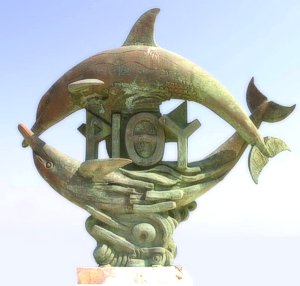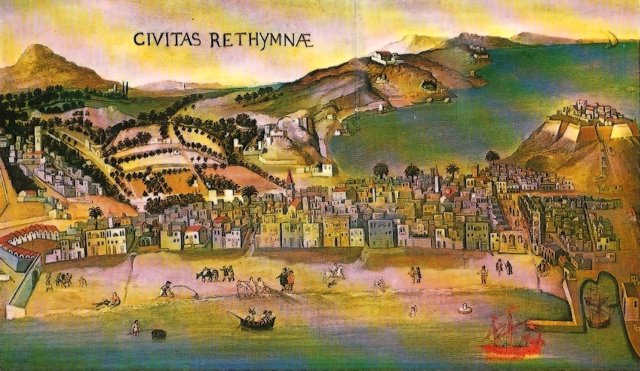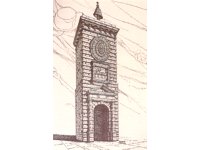
There are evidences that Rethymnon city is built on the site of ancient Rithymna that flourished during Mycenean times. In the 3rd century AD, for some unknown reason, it lost its importance, and is only mentioned as a large village. However, Rithymna retained its autonomy and independence, as is evidenced by the coins which, as a free city, it continued to mint. One of these coins is today depicted as the crest of the town with two dolphins in a circle.
During the Byzantine period the town continued to be inhabited, and parts of Roman and Byzantine mosaics have been found.
Rethymnon became a city during the Venetian occupation. The Venetians needed an intermediary port for their operations for their ships travelling from Iraklion to Hania. They also needed an administrative center, so Rethymnon became the third bigger city in Crete and an important cultural center.

The Venetians, fortified the city and called it Castel Vecchio. After that a land wall was built according to the drafts of the architect Michele Sanmicheli, which was completely destroyed in 1571 during the devastating attack of the pirate Cheireddin Barbarossa.


The 20m high tower with the sundial was demolished in 1945 in an effort to widen the exixting street.
In 1573 the construction works of the fortress of Rethymno began, which should set seal to the Venetians’ final securing of their position. At this stage luxurious public buildings and private mansions were built, while the city was embellished with a central square, a Club of the Nobility (Loggia), fountains such as that of Rimondi, a large sun dial, a main road and smaller alleys, which led to the churches, the monasteries, the mansions and the simple dwelling houses according to the model of town planning in Venice.
At the same time an unparalleled stimulus was given to the intellectual development of the area.
However, in the flower of the Renaissance the Turkish invaders abruptly ended this movement, and, imposing Muslim elements, contributed to the change of the Rethymno area into a multi-cultural community.
The Turks besieged Rethymno In September 1646
The invaders occupied the
Venetian mansions, adding their own architectural elements and emphasising their presence with mosques and minarets. In the former alleys of the Venetian street network of Rethymno the buildings changed their appearance, since wooden balconies were added to the facades as extensions of the upper floors of the buildings. Thus the city achieved a different character, that of a Muslim town.
During the period of Ottoman rule, Rethymnon fell into decline as did the other towns in Crete. During the difficult years of the struggle for independence, its inhabitants were actively involved and, as a result, many of its freedom – fighters were executed.
In 1897, the Russian army took Rethymnon and held it until 1909. In 1913, it became part of Greece, together with the rest of Crete.
During the German occupation, the Rethymniots took an active part in the resistance against fascism.
In the last 25 years, Rethymno has seen a significant growth, in economy by the development of tourism and in culture by the operation of the university.